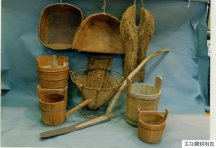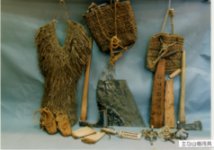
| Pseudonym reading | Kitakami Sanno Chinosan Soseisan Collection |
|---|---|
| Specified type | Country designation |
| Type | Important tangible folk cultural property |
| Designated date | February 20, 2003 |
| Specified details | Production tools |
| quantity | 1,345 points |
| location | Miyakoichi Kawai Kitakamisanchi Folklore Museum |
| owner | Miyako |
| Holding group | |
| Management organization | |
| home page | Miyako City (Kitakami Sanchi Folklore Museum) |
Overview
Former Kawai village (now Miyako city) is a typical village with dotted settlements along the Kunigawa River (Heigiwa), which divides north Kitakami Mountains into the north and south, and the Ogunigawa branch. It is Yamamura.
This material is organized around the activities of the Miyako city Kitakami Sanshi Folklore Museum from among the approximately 5,000 materials collected based on the results of the folklore survey conducted from the late 1950s.
Materials include natural material collection and processing tools, agricultural tools, mountain tools, hunting and fishing tools, livestock tools, sericulture tools, spinning and weaving tools, various tools It is divided into nine fields of work equipment, and they are organized in the order of work processes.
As a feature of the production tools in this area, attention is paid to the use of natural wood skillfully and the use of many trees, vines, bark and the like as materials.
In addition, in individual tools, southern type treads (suki) in farming tools, direct sowing tools (for scallops), scorrels in sericulture tools, sanza in cleaning tools, and yam tools Tools for making sleepers, lacquer tools in various types of work, and tools for making plasterboards are attracting attention as regional features.
Photo courtesy: Former Kawai Village Board of Education, upper left: main agricultural tools, lower central photo: main mountain equipment
image

